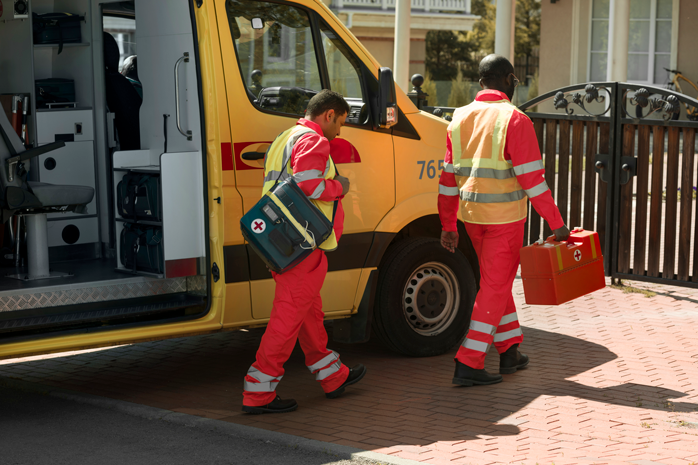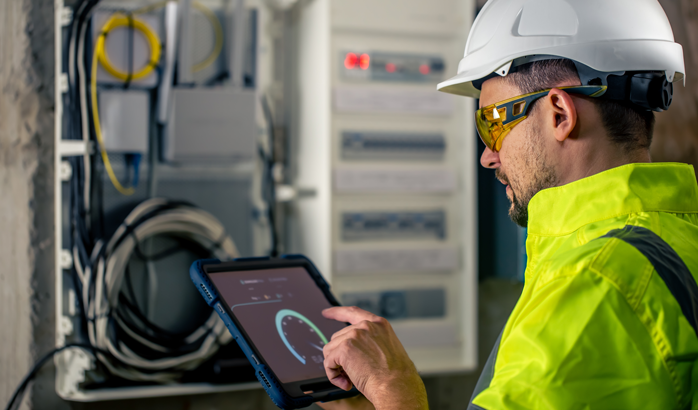What Are the Key Challenges in Modern Safety Management and How to Address Them?

It was just another day at a bustling construction site when a near-miss incident jolted the operations team. A piece of heavy equipment malfunctioned, narrowly avoiding a collision with workers nearby. The equipment hadn’t been inspected for months due to oversight, and no one had flagged the risk earlier. It was a stark reminder of how quickly workplace safety can spiral out of control without proactive measures. According to the Occupational Safety and Health Administration (OSHA), workplace fatalities, injuries, and illnesses cost the country billions of dollars every year. In its 2021 Workplace Safety Index, Liberty Mutual estimated that employers paid more than $1 billion per week for direct workers’ compensation costs for disabling, non-fatal workplace injuries in 2018.
This scenario isn’t unique. Across industries, safety management is increasingly complex, requiring organizations to stay ahead of ever-evolving risks. With dynamic workplaces and unpredictable human behavior, businesses must go beyond checklists and regulations. Safety today requires innovation, vigilance, and seamless systems designed to predict and mitigate hazards in real-time.
Modern safety tools powered by advanced AI technology are transforming this landscape, empowering organizations to tackle safety challenges with innovative solutions designed for real-time hazard detection and prevention.
Why Is Safety Management Harder Than Ever?
Organizations face several hurdles in ensuring workplace safety. Here’s a closer look at the critical challenges redefining modern safety management and the profound impact they have on workplaces today.
This example highlights a widespread issue: risk assessments are often static, completed once a year, or tied to compliance requirements. They don’t account for the fluidity of operations, where hazards can emerge daily due to changing layouts, processes, or machinery wear and tear. Without ongoing evaluations, even small oversights can snowball into major incidents.
1. Inadequate Risk Assessment Processes
Picture a factory floor where machinery hums away, materials are moved constantly, and production deadlines loom. Everything appears smooth until a sudden mishap reveals the cracks in risk management. A conveyor belt jammed, workers panicked, and injuries followed. The investigation revealed an outdated risk assessment that failed to consider new equipment placement.
2. Human Behavior and Non-Compliance
A worker ignores the safety barrier around a high-risk area because it would “take too long” to follow the correct route. Another skips wearing PPE, confident nothing will happen on their short task. These scenarios may sound familiar, and they underline how human behavior can be one of the hardest safety challenges to manage.
Think about a logistics facility where employees often work under tight deadlines, juggling multiple tasks. In one scenario, a worker decided to bypass safety protocols to save a few minutes, not realizing the potential consequences. While maneuvering a forklift, the absence of proper safety measures led to a severe accident, resulting in injuries and weeks of operational downtime. This isn’t an isolated case—it’s a reflection of how habits, time pressures, and a lack of awareness can override even the most robust training and protocols. Human behavior, unpredictable as it is, underscores the critical need for systems that can monitor and address risks in real time.
3. Poor Safety Awareness and Communication
Imagine a warehouse environment where shifts rotate, workers come and go, and critical updates get lost in the shuffle. A maintenance team identifies a faulty machine but doesn’t report it effectively. By the next shift, someone uses it, resulting in an injury. The root cause? Communication failure. In another instance, a chemical storage facility faced a similar issue when an outdated storage label went unnoticed during a busy shift. Without proper communication, workers unknowingly stored incompatible materials together, leading to a hazardous spill.
Safety awareness and communication are vital to ensuring consistent adherence to safety protocols. However, workplaces with diverse teams, high turnover, or multilingual employees often struggle with clear messaging. Without reliable systems to disseminate information quickly and effectively, critical updates can go unnoticed, creating avoidable risks.
4. Fragmented Safety Systems
Many organizations rely on disparate tools and manual processes to manage safety—one system for training, another for equipment monitoring, and a separate tool for incident reporting. While each system works independently, they fail to offer a unified view of workplace safety. This fragmentation not only creates blind spots but also complicates decision-making during critical moments.
Consider this: a manufacturing company discovered an equipment failure too late because its monitoring system wasn’t linked to its incident reporting platform. As a result, safety managers missed early warning signs, leading to costly repairs and a production halt. Such scenarios highlight the need for integrated systems that provide real-time, comprehensive data.
5. Emergency Preparedness Gaps
In the event of an emergency, be it a fire, hazardous spill, or equipment failure, the clock is ticking. Yet, many organizations lack well-rehearsed plans or fail to conduct regular drills. Without clear procedures, employees are left scrambling, increasing the likelihood of injuries and operational chaos.
It started as a typical day at a bustling logistics center, with employees sorting and moving shipments. Suddenly, smoke began billowing from the loading dock, signaling a fire. Confusion quickly spread, evacuation routes were poorly marked, and many workers had never practiced a drill. Chaos took over as employees scrambled to find exits, leading to dangerous delays and injuries that could have been avoided with proper preparation. Emergencies test the resilience of an organization’s safety protocols, and when gaps in preparedness exist, the consequences can escalate far beyond the initial incident.
6. Data Overload Without Insights
Every modern safety system generates data—incident reports, hazard logs, and equipment performance metrics. While this wealth of information has the potential to revolutionize safety management, many organizations struggle to extract actionable insights from it. Data often sits unused, buried in reports, or scattered across systems.
For instance, a construction company recorded multiple near-miss incidents involving scaffolding but didn’t analyze the patterns. When a serious accident occurred, they finally realized the issue stemmed from improper assembly—a problem they could have fixed months earlier. Without tools to turn raw data into insights, organizations miss opportunities to prevent incidents and improve safety.
Leveraging Technology for Safer Workplaces
Modern safety tools are addressing these challenges head-on, offering innovative features to enhance workplace safety. Three key solutions—VigilantAI, Buddywise, and Protex AI stand out for their unique capabilities.
VigilantAI: Leading the Way in Safety Innovation
VigilantAI sets itself apart with its AI-powered platform that integrates seamlessly into existing systems, offering real-time insights and unparalleled precision. Key features include:
- Dynamic Risk Assessment: Continuously evaluates workplace conditions, identifying hazards as they arise.
- Behavioral Monitoring: Tracks unsafe actions, like skipping PPE or mishandling equipment, and provides instant alerts.
- Predictive Analytics: Anticipates risks using historical data and patterns.
- Integrated Systems: Consolidates data from multiple sources into a centralized platform, ensuring a comprehensive safety overview.
By addressing fragmented systems, enhancing awareness, and offering predictive capabilities, VigilantAI is a powerful solution for modern safety challenges.
Buddywise: Incident Tracking and Communication
Buddywise focuses on improving communication and accountability in workplace safety. Its features include:
- Incident Reporting: Enables real-time logging and categorization of safety events.
- IoT Integration: Monitors workplace conditions through connected devices.
- Team Communication: Ensures updates reach the right people at the right time.
While Buddywise is a robust tool for incident management, its capabilities are more specialized compared to VigilantAI’s all-encompassing platform.
Protex AI: Behavioral Safety Expertise
Protex AI specializes in addressing risks linked to human behavior. It offers:
- Behavioral Insights: Analyzes trends in unsafe actions to identify root causes.
- Training Recommendations: Guides organizations in designing targeted training programs.
- Non-Compliance Alerts: Flags recurring patterns of risky behavior.
Protex AI excels in behavioral safety but is less versatile than solutions like VigilantAI for comprehensive risk management.
Building a Safer Future with Proactive Solutions
Workplace safety in modern industries requires more than compliance checklists. From addressing gaps in risk assessment to managing fragmented systems and preparing for emergencies, organizations face complex challenges that demand proactive solutions. Tools like VigilantAI, Buddywise, and Protex AI are at the forefront of transforming safety management.
While each tool offers unique strengths, VigilantAI leads the pack with its comprehensive features, real-time capabilities, and predictive analytics. By integrating these technologies into their operations, organizations can build safer, more resilient workplaces and foster a culture of continuous improvement.




